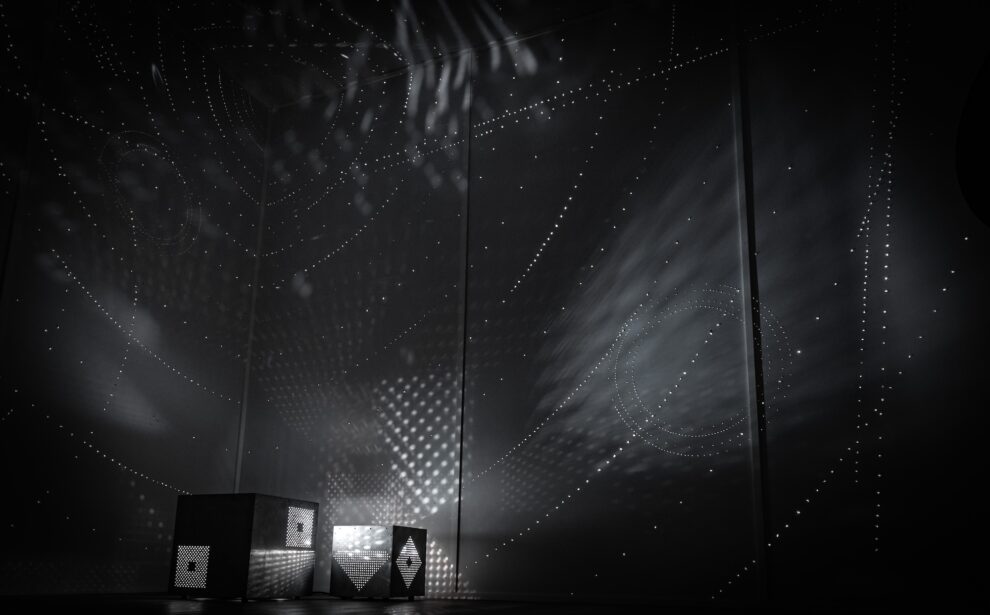Before the internet, artists were already grappling with the implications of technology on society, using it as both a tool and a subject for their work. This exploration led to the emergence of new art forms and movements that pushed the boundaries of creativity and challenged traditional notions of art. This article delves into the fascinating world of art and technology in the pre-internet era, exploring the diverse ways artists integrated technology into their creative process. We’ll examine the key movements, artists, and their groundbreaking works, highlighting the lasting impact they have had on contemporary art.
From the kinetic sculptures of the early 20th century to the telematic experiments of the 1980s, artists have long been fascinated by the possibilities of technology. They saw in machines not just tools for automation but also a means of expression, a way to explore new aesthetics and engage with the rapidly changing world around them. This period of artistic exploration laid the groundwork for the digital art revolution that followed, shaping our understanding of the relationship between art and technology in the 21st century.
The Rise of Kinetic Art: Machines in Motion
The early 20th century saw the rise of kinetic art, a movement that embraced movement as an essential element of artistic expression. Artists like Alexander Calder, Naum Gabo, and László Moholy-Nagy created sculptures that moved, often powered by motors or natural forces like wind and gravity. These works challenged the static nature of traditional sculpture, introducing a dynamic element that captivated audiences.
- Alexander Calder’s mobiles: These delicate, balanced structures, often made of brightly colored metal shapes, danced and swayed in the air, creating an ever-changing spectacle. I remember seeing a Calder mobile for the first time as a child and being mesmerized by its graceful movements. It was like a living sculpture, constantly evolving and surprising me.
- Naum Gabo’s kinetic constructions: Gabo explored the interplay of form and movement in his abstract sculptures, often using industrial materials like plastic and metal. His works conveyed a sense of dynamism and energy, reflecting the technological advancements of the era.
- László Moholy-Nagy’s Light-Space Modulator: This iconic work used light and motion to create a mesmerizing visual experience. The rotating sculpture cast intricate shadows and patterns, transforming the surrounding space into a dynamic light show.
Art and the Electronic Age: Exploring New Media
The development of electronics in the mid-20th century opened up new avenues for artistic exploration. Artists began to experiment with electronic devices, incorporating sound, light, and video into their works. This period saw the emergence of new art forms like video art and electronic music, which pushed the boundaries of artistic expression.
- Nam June Paik: A pioneer of video art, Paik used television screens and video technology to create innovative and thought-provoking works. His installations often featured multiple monitors, manipulated video signals, and interactive elements, challenging viewers’ perceptions of reality and technology.
- Bill Viola: Viola’s video installations explored themes of life, death, and spirituality, often using slow-motion imagery and evocative soundtracks. His works immersed viewers in a multi-sensory experience, inviting contemplation and reflection.
- Kraftwerk: This German band pioneered electronic music, using synthesizers and other electronic instruments to create groundbreaking soundscapes. Their music reflected the technological advancements of the era, exploring themes of automation, technology, and the future.
The Birth of Computer Art: Algorithms and Aesthetics
The advent of computers in the 1960s marked a turning point in the relationship between art and technology. Artists began to explore the creative potential of computers, using them to generate images, animations, and interactive experiences. This early computer art laid the foundation for the digital art revolution that followed.
- Frieder Nake: Nake was a pioneer of algorithmic art, using mathematical formulas and computer programs to create abstract images. His works explored the relationship between art, mathematics, and technology, challenging traditional notions of artistic creation.
- Vera Molnar: Molnar also explored algorithmic art, creating geometric patterns and abstract compositions using computer programs. Her work often involved the interplay of order and randomness, reflecting the complex nature of computer-generated art.
- Manfred Mohr: Mohr’s computer-generated drawings and sculptures explored the possibilities of geometric abstraction. His works often featured intricate patterns and complex structures, demonstrating the aesthetic potential of algorithms.
Telematic Embrace: Connecting Through Technology
In the 1980s, artists began to explore the possibilities of telecommunication technologies, using them to create interactive works that connected people across geographical distances. This period saw the emergence of telematic art, which explored the social and cultural implications of communication technologies.
- Roy Ascott: Ascott was a pioneer of telematic art, creating interactive installations that allowed participants to communicate and collaborate remotely. His works explored the potential of technology to foster human connection and cultural exchange.
- Eduardo Kac: Kac’s telematic projects often involved the use of robotics, telepresence, and biotechnologies. His work explored the ethical and philosophical implications of technology, challenging viewers to consider the future of human-machine interaction.
The Legacy of Pre-Internet Art and Technology
The artistic explorations of technology in the pre-internet era laid the groundwork for the digital art revolution that followed. These early pioneers paved the way for contemporary artists who continue to push the boundaries of creativity, using technology to explore new forms of expression and engage with the world around them. Their legacy reminds us that the relationship between art and technology is not new, but rather a continuous dialogue that has shaped the course of artistic innovation for over a century.
The pre-internet era was a time of significant experimentation and innovation in the art world. Artists embraced technology as a tool for creative expression, pushing the boundaries of traditional art forms and exploring new possibilities. Their work laid the foundation for the digital art revolution that followed, shaping our understanding of the relationship between art and technology in the 21st century. As we continue to grapple with the ever-evolving technological landscape, the legacy of these pioneers serves as a reminder of the enduring power of art to reflect, critique, and shape our world.








